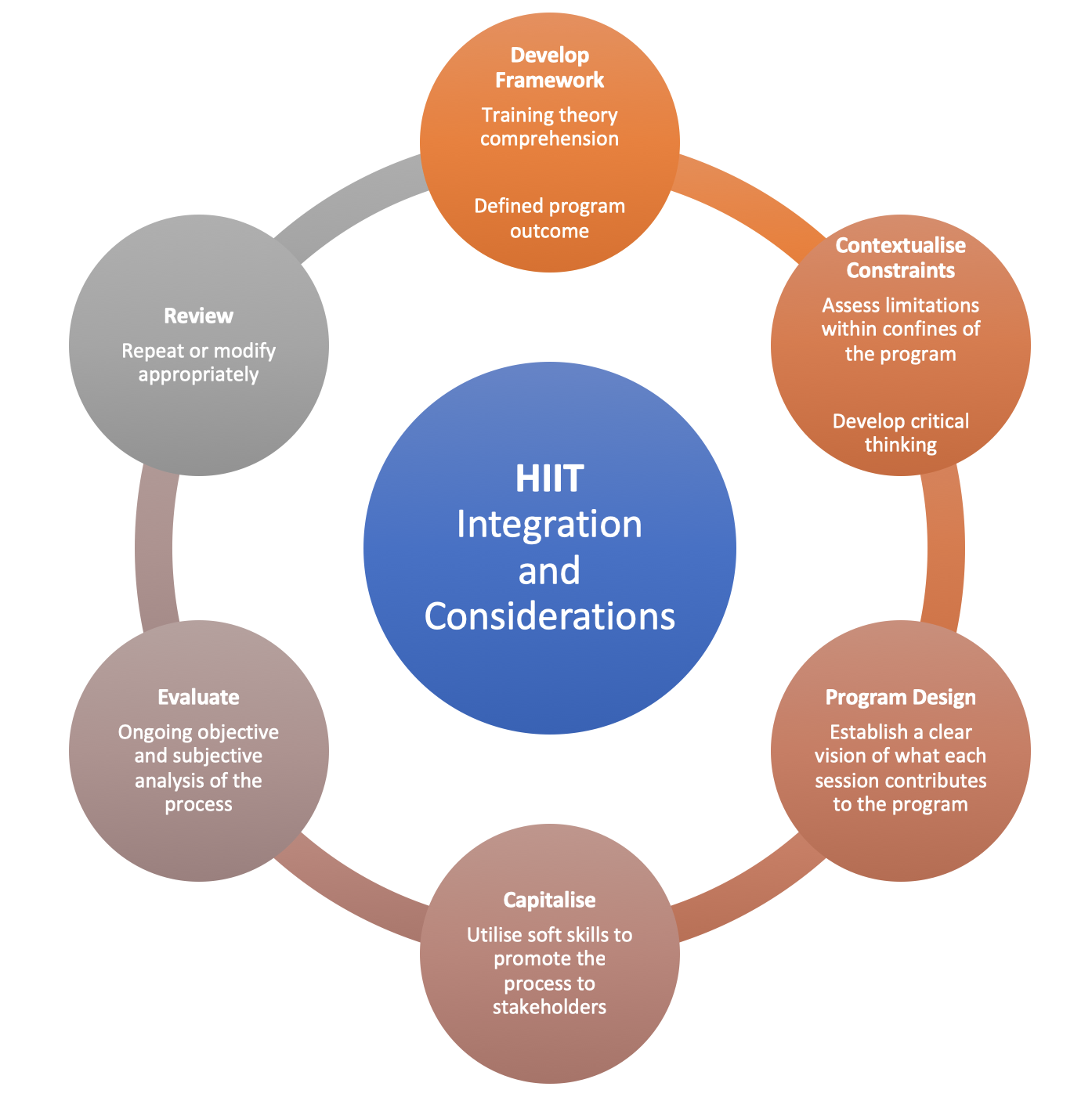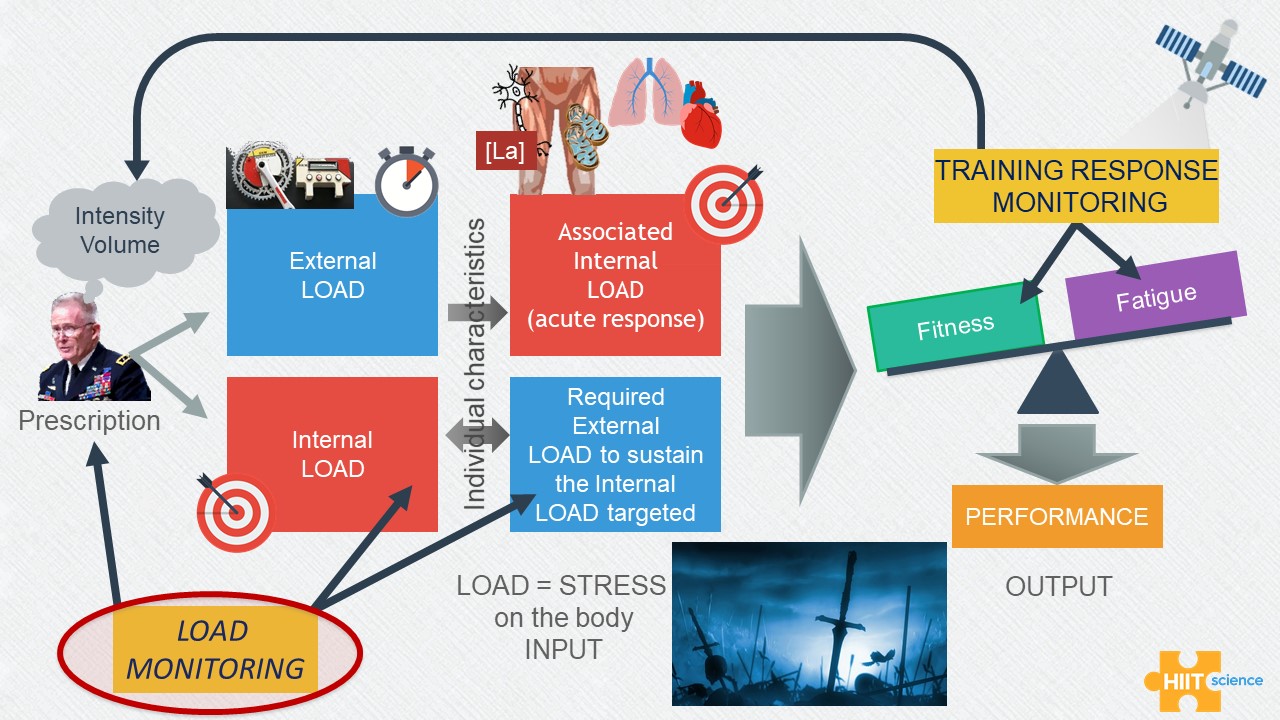Regardless of your chosen sport, knowing how to implement high-intensity interval training (HIIT) within any S&C program should be a non-negotiable skill to have in your wheelhouse. The benefits are well established, and HIIT can be catered to stimulate the precise physiological (and psychological) responses needed to enhance our athlete’s capacities. Yet, to make the most out of HIIT, we need to have a clear rationale as to why and when we use it.
Training theory presents this method as a rather simple one — training stimulus followed by adequate recovery induces adaptation. However, it’s often not quite as easy as it sounds, and the reality for many practitioners is that you have to overcome numerous contextual constraints (that seem to compound each other). The beauty of HIIT, of course, is that it can be manipulated in such a way that it can reduce or completely remove many of the contextual limitations. The twist, however, is that this only occurs when performance staff and coaches have a clear understanding of the desired short- and long-term outcomes. Once this is established, we can dig into our wheelhouse and implement the specific HIIT weapons necessary to stimulate the required adaptations, and successfully develop these outcomes.
If you listen to any coach or manager speak you are likely sick of hearing them talk about the ‘
process taking care of the result’. However, like any other cliché, the premise of the comment stands true across many areas within sports and other industries. The process is a manageable method that hopefully produces a positive outcome, but one that in reality, we have little direct control over. Indeed, the notion of successful goal planning is built upon creating a series of practical processes or systems designed to succeed. The best practitioners I have worked with or talked to have this way of thinking about their physical training and programming.
They build a framework (process) designed to physically develop their athletes, providing a platform for coaching staff to further advance their chance of success. To do this though, we must have a fundamental understanding of both the physical demands of the sport, the physical capacities and history of our individual athletes, collectively referred to as our
context (Figure 1).

Fig 1: Before lining up your target and prescribing HIIT, always consider the sport demands, individual athlete, and the context.
This will naturally provide the framework we can use to reach our shared goals. Once the framework is developed, the next important step is to appropriately define the likely constraints that may hinder our ability to achieve this. These limitations are widespread but may include the scheduling of fixtures, shortened preparation phases, climate, access to training facilities, or simply, the coach not believing in what you do. For this reason, to successfully implement any body of work within an organisation, it’s important to have support from those who have the ability to assist or create change (positive or negative). In team sports, this may be coaches, general managers, senior playing groups, high-performance managers, or performance staff (to name a few). Depending on the personnel and their past experience, they may require convincing that your process will improve the organisation and its results. Therefore, having a thorough knowledge of your program’s framework and developing soft-skills to communicate this are essential – and in fact, is arguably more important than your programming and scientific knowledge!
Overcoming these imposed constraints is a vital part of any role in high-performance sport. To do this successfully requires the ability to critically analyse the situation before, during and after the fact. As a result, when outlining the initial program framework, it is important to minimise predicted issues and be agile in your thinking and programming to be able to adjust the program when required — on the fly. In sports that have minimal time for a long-term progressive conditioning program, understanding what provides the best ‘
bang for buck’, may be the most important factor to consider. Here, it is even more critical for the training stimulus prescribed to have a defined purpose that works towards the bigger picture. HIIT often comes to the lead in this regard. This means we’re no longer running for the sake of running. We aren’t building ‘volume in the legs’, or anything else that is not clearly thought-out and constructive in nature. Instead, we have a clear understanding of what the session offers the athlete (what are you trying to adapt and achieve?). When we understand this, we put greater consideration to the minimal dose, or process, required for the desired response. It is this understanding of how your program is developing your athletes that will allow greater flexibility when you encounter unanticipated situations.
Developing and implementing a successful conditioning program requires more than simply considering training theory. Practitioners must have an understanding of the physical and tactical goals of individuals (not to mention their personal motivations and immediate mindset) and the organisation, and a well-defined process tailored to achieving those goals. Knowing that there isn’t a one size fits all solution, conditioning programs must be tailored to the athlete needs in alignment with the context (Figure 1). Not only does this require strong communication with coaches, staff and athletes, but also a well-developed support network of valid and reliable training methodology, data and research (Figure 2).

Fig 2: The considerations for integrating a HIIT framework within your high-performance program.
So how is this framework built and integrated into your program? Based on my experiences, below are some key points I’ve learnt along the way to assist this process:
- Understand the short- and long-term learning and training outcomes in the context of your environment (Figure 1).
- Within rugby league (my background experience), we are fortunate to have a three-month pre-season (prep) phase. This lends itself to a more slowly developed and comprehensive program – reducing the need to change multiple variables at once. The challenge, in this case, is to systematically develop required physical and technical (i.e. running mechanics) capacities, minimising monotony, whilst working with coaching staff to overload specific qualities. These training outcomes will differ between sports and coaching philosophies, but it is important they are well-known across the high-performance program.
2. Know your HIIT weapons and how to use them.
- Once the physiological targets of HIIT are identified, the most important aspect in your prescription is understanding how you can manipulate the wide range of HIIT variables to build and develop your HIIT weapons. The effect of this manipulation can be extreme, which is the beauty of HIIT. All have a place within a holistic conditioning program, but know why they are in your program!
- Side note: There is still time for less directed ‘hard work’, that may aim to develop other qualities that are required in team sports – mental resilience, teamwork etc.
3. Communicate.
- Have an open dialogue with other performance and medical staff, coaches and even athletes on the rationale of your program and sessions. This two-way discussion will increase buy-in and allow for feedback that will further reinforce your systems.
4. Know if it’s working.
- Develop and utilise monitoring systems to measure whether or not your stimulus is hitting the targets you want. Understand the ‘training status’ of your athletes and the outcome of the training stimulus (i.e. how they are responding/coping and adapting to the external load). Feed this back to their ‘performance output’ and modify if need be (Figure 3).

Fig 3: Developing an athlete surveillance system is integral to assess the dose-response relationship of HIIT. Chapter’s 8 and 9 in HIIT Science expand the process in detail.
With a strong understanding and established rationale of the integrated performance framework, considerations for known (and unknown) constraints and the soft-skills required to best implement and coach the program, practitioners are developing the best environment they can to maximise team and athlete’s chances of success.
 About the author
About the author: Tannath Scott is a strength & conditioning coach, sports scientist, and Adjunct Associate Lecturer with The Faculty of Health & Behavioural Sciences at The University of Queensland, Australia. Follow him on Twitter



 About the author: Tannath Scott is a strength & conditioning coach, sports scientist, and Adjunct Associate Lecturer with The Faculty of Health & Behavioural Sciences at The University of Queensland, Australia. Follow him on Twitter @TannathScott
About the author: Tannath Scott is a strength & conditioning coach, sports scientist, and Adjunct Associate Lecturer with The Faculty of Health & Behavioural Sciences at The University of Queensland, Australia. Follow him on Twitter @TannathScott





